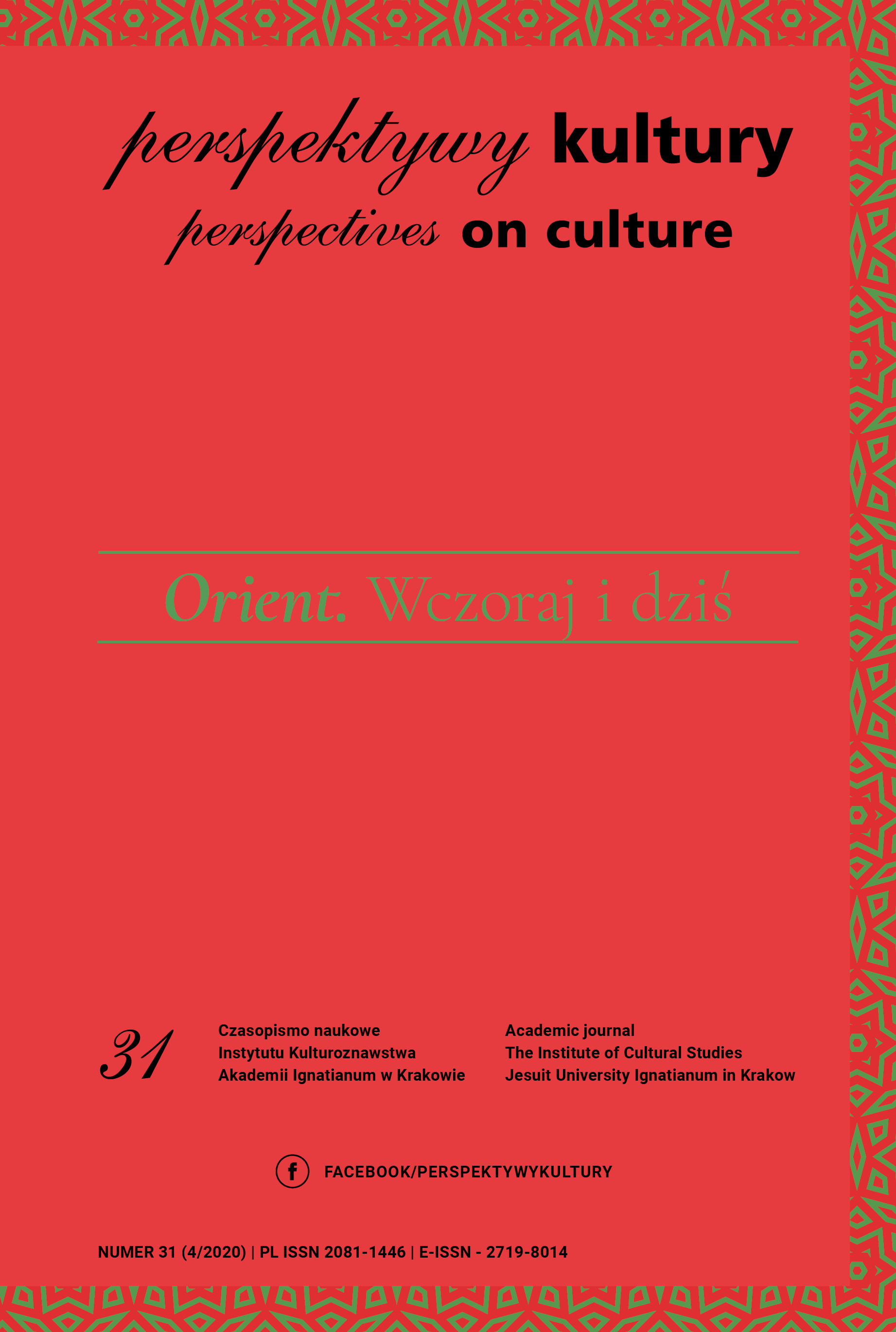The Turkish Republic of Northern Cyprus as an Example of a Non-Recognized State
Abstract
The issue of Cyprus remains one of the longest unregulated international disputes. For nearly half a century of the island’s de facto division, it has been one of the factors destabilizing the situation in the eastern Mediterranean. It has periodically led to tensions, not only between members of the two Cypriot communities, the Greek and Turkish Cypriots, but also between Greece and Turkey, and finally, Turkey and the European Union. The purpose of this article was to present the Turkish Republic of Northern Cyprus as an example of a so-called unrecognized state and to assign it to an appropriate type of unrecognized states. The selected case was examined on the basis of the attributes of an unrecognized state, formulated by a leading researcher of this issue, Nina Caspersen, and a selected typology of unrecognized states.
References
Adamczyk, A. (2002). Cypr – dzieje polityczne. Warszawa: Wydawnictwo Dialog.
Aid Programme for the Turkish Cypriot Community (2020). Retrieved from https://ec.europa.eu/info/funding-tenders/funding-opportunities/funding-programmes/overview-funding-programmes/aid-programme-turkish-cypriot-community_en (access: 17.06.2020).
Barcik, J. & Srogosz, T. (2017). Prawo międzynarodowe publiczne. Warszawa: C.H. Beck.
Caspersen, N. (2011). States Without Sovereignty: Imitating Democratic Statehood. In N. Caspersen & G. Stansfield (Eds.), Unrecognized States in the International System. Abingdon: Routledge.
Caspersen, N. (2012). Unrecognized States: The Struggle for Sovereignty in the Modern International System. Cambridge: Polity.
Caspersen, N. & Stansfield, G. (2011). Introduction: Unrecognized States in the International System. In N. Caspersen & G. Stansfield (Eds.), Unrecognized States in the International System. Abingdon: Routledge.
Cengiz, O.K. (2020). Why is Turkish Cypriot leader declared ‘enemy’ in Turkey? Al.-Monitor, 18.02.2020. Retrieved from https://www.al-monitor. com/pulse/originals/2020/02/turkey-mediterranean-turkish-cypriot-leader-declared-enemy.html (access: 24.06.2020).
Council Regulation (EC) No 389/2006 of 27 February 2006 establishing an instrument of financial support for encouraging the economic development of the Turkish Cypriot community and amending Council Regulation (EC) No 2667/2000 on the European Agency for Reconstruction (2006). Retrieved from https://eur-lex.europa.eu/legal-content/PL/TXT/ HTML/?uri=CELEX:32006R0389&from=EN (access: 18.06.2020).
Crawford, J. (2006). The Creation of States in International Law. Oxford: Oxford University Press.
Dodd, C. (2010). The History and Politics of the Cyprus Conflict. Basingstoke: Palgrave Macmillan.
Ekici, T. (2019). The Political and Economic History of North Cyprus: A Discordant Polity. Cham: Palgrave Macmillan.
Faustmann, H. (2009). The Colonial Legacy of Division. In J. Ker-Lindsay & H. Faustmann (Eds.), The Government and Politics of Cyprus. Bern: Peter Lang.
Góralczyk, W. & Sawicki, S. (2001). Prawo międzynarodowe publiczne w zarysie. Warszawa: Wydawnictwo Prawnicze LexisNexis.
Harding, L. (2020). Turkish Cypriot leader warns Cyprus is facing permanent partition, The Guardian, 6.02.2020. Retrieved from https://www.theguardian.com/world/2020/feb/06/turkish-cypriot-leader-warns-cyprus-facing-permanent-partition-mustafa-akinci (access: 24.06.2020).
Isachenko, D. (2012). The Making of Informal States: Statebuilding in Northern Cyprus and Transnistria. Basingstoke: Palgrave Macmillan.
Ker-Lindsay, J. (Ed.). (2015). Resolving Cyprus: New Approaches to Conflict Resolution. London: I.B. Tauris.
King, C. (2001). The Benefits of Ethnic War: Understanding Eurasia’s Unrecognized States. World Politics, July (53), 524–552.
Kyris, G. (2015). The Europeanisation of Contested Statehood: The EU in Northern Cyprus. Farnham: Ashgate.
Mallinson, W. (2010). Partition Through Foreign Aggression: The Case of Turkey in Cyprus. Minneapolis: University of Minnesota.
Mehmet, O. (2010). Sustainability of Microstates: The Case of North Cyprus. Salt Lake City: The University of Utah Press.
Michael, M.S. (2011). Resolving the Cyprus Conflict: Negotiating History. New York: Palgrave Macmillan.
Misztal, M. (2013). Historia Cypru. Kraków: Wydawnictwo Naukowe Uniwersytetu Pedagogicznego.
Mulaj, K. (2011). International Actions and the Making and Unmaking of Unrecognized States. In N. Caspersen and G. Stansfield (Eds.), Unrecognized States in the International System. Abingdon: Routledge.
North Cyprus Almanack. (1987). London: K. Rustem and Brother.
Osiewicz, P. (2008). Pokojowa regulacja kwestii cypryjskiej. Aspekty prawne i polityczne. Toruń: Wydawnictwo Mado.
Osiewicz, P. (2013). Konflikt cypryjski. Warszawa: Wydawnictwo Naukowe PWN.
Protocol No. 10 on Cyprus (2003). Official Journal L 236, 23/09/2003, P. 0955–0955.
Resolution 541 (1983). United Nations Security Council. Retrieved from http://unscr.com/en/resolutions/doc/541 (access: 18.06.2020).
Shaw, M. (2000). Prawo międzynarodowe. Warszawa: Książka i Wiedza.
Tamkoç, M. (1988). The Turkish Cypriot State: The Embodiment of the Right of Self-determination. London: K. Rustem and Brother.
Turkey to give $325M to help Turkish Cyprus’ virus-hit economy (2020). Daily Sabah, 26.05.2020. Retrieved from https://www.dailysabah.com/business/ economy/turkey-to-give-325m-to-help-turkish-cyprus-virus-hit-economy (access: 18.06.2020).
Vural, Y., Sonan S., & Michael, M.S. (2018). The Turkish Cypriot dilemma: between Ankara and Lefkosia. In M.S. Michael & Y. Vural (Eds.), Cyprus and the Roadmap for Peace: A Critical Interrogation of the Conflict. Cheltenham: Edward Elgar Publishing.
Copyright (c) 2020 Jesuit University Ignatianum in Krakow

This work is licensed under a Creative Commons Attribution-NoDerivatives 4.0 International License.
Autor, zgłaszając swój artykuł, wyraża zgodę na korzystanie przez Wydawnictwo Uniwersystet Ignatianum z utworu na następujących polach eksploatacji:
- utrwalania utworu w formie papierowej, a także na nośniku cyfrowym lub magnetycznym;
- zwielokrotnienia utworu dowolną techniką, bez ograniczenia ilości wydań i liczby egzemplarzy;
- rozpowszechniania utworu i jego zwielokrotnionych egzemplarzy na jakimkolwiek nośniku, w tym wprowadzenia do obrotu, sprzedaży, użyczenia, najmu;
- wprowadzenia utworu do pamięci komputera;
- rozpowszechniania utworu w sieciach informatycznych, w tym w sieci Internet;
- publicznego wykonania, wystawienia, wyświetlenia, odtworzenia oraz nadawania i reemitowania, a także publicznego udostępniania utworu w taki sposób, aby każdy mógł mieć do niego dostęp w miejscu i czasie przez siebie wybranym.
Wydawca zobowiązuje się szanować osobiste prawa autorskie do utworu.





